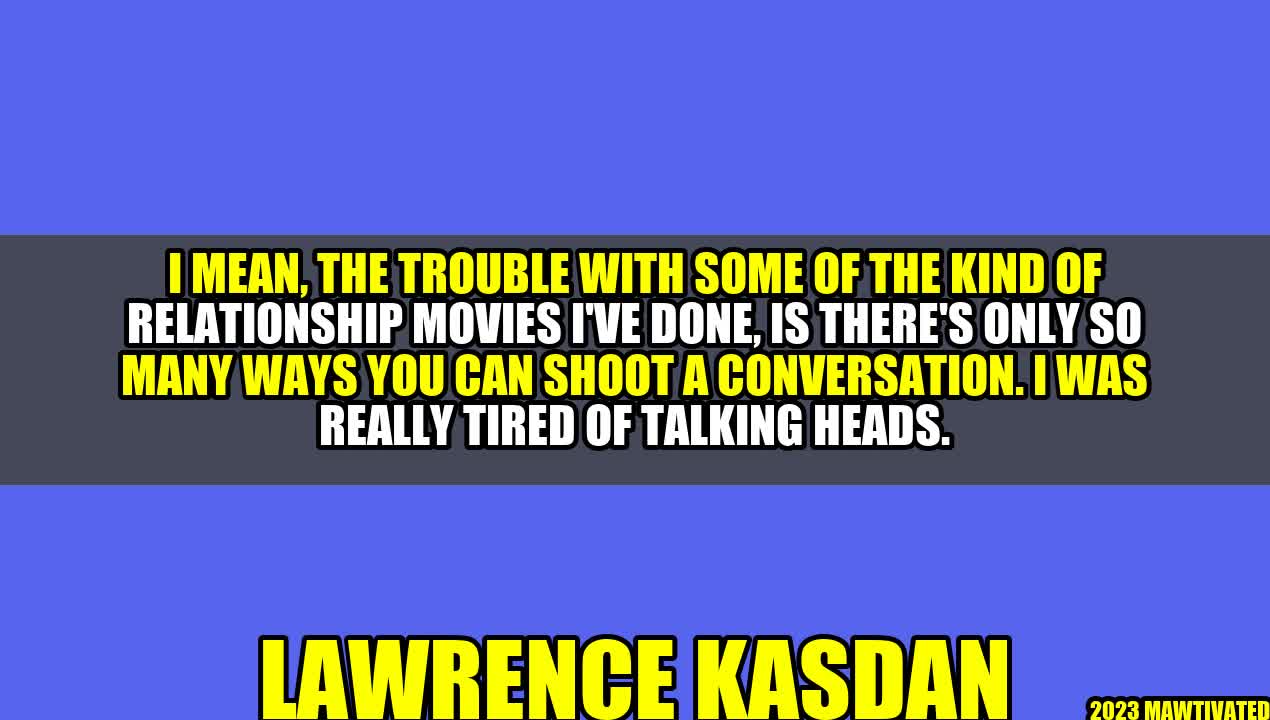The Art of Cinematography: Beyond Talking Heads

An Inspiring Story
Once upon a time, there was a young filmmaker who aspired to create something extraordinary. He worked tirelessly on his craft, studying the works of the masters and honing his skills. But there was one thing that he couldn’t seem to shake off – the feeling that his films lacked that certain flair, that they were somehow lacking in visual impact.
One day, as he was walking through the streets of his city, he stumbled upon an old theater that was playing an old classic film. He purchased a ticket and went inside, and as the lights dimmed and the film began, he was transported to a world filled with vibrant colors, stunning visuals, and breathtaking cinematography. It was then that he knew that he had to learn the art of cinematography if he wanted to make a lasting impact.
The Trouble with Talking Heads
The young filmmaker in our story had discovered the same thing that many filmmakers before him had realized – there’s only so many ways you can shoot a conversation. Dialogue-heavy films, also known as ‘talking heads’, rely heavily on the performances of the actors and the quality of the script, but they can often lack in visual impact. While there’s nothing inherently wrong with dialogue-heavy films, they can become stale and uninteresting if the visuals don’t measure up.
Renowned filmmaker Lawrence Kasdan once shared his thoughts on this matter, saying, “I was really tired of talking heads.” Kasdan is no stranger to dialogue-heavy films, having directed classics like ‘The Big Chill’ and ‘Grand Canyon’, but he knew that he needed to push the boundaries of his craft in order to keep things fresh and interesting for his audience.
“I was really tired of talking heads.” – Lawrence Kasdan
The Art of Cinematography
So, how can filmmakers move beyond the constraints of ‘talking heads’ and create visually stunning films that will captivate their audiences? It all comes down to the art of cinematography. Cinematography is the art of capturing the moving image through the use of specialized equipment and techniques, and it is a critical component of film-making.
One of the simplest ways to start incorporating the art of cinematography is through the use of different camera angles and movements. Instead of solely relying on static shots of characters sitting and talking, try experimenting with different camera angles and movements to add a sense of dynamism to your scenes. Some examples include:
- Low-angle shots to make a character appear more powerful or threatening
- Handheld camera movements to create a sense of chaos or urgency
- Overhead shots to give a sense of scale or to highlight the environment
- Tracking shots to follow characters as they move through a scene
Another way to incorporate the art of cinematography is through the use of lighting. The right lighting can create a mood, highlight certain features, and guide the audience’s attention. Experiment with different lighting techniques, such as silhouettes, backlighting, and color grading, to add depth and dimension to your film.
Conclusion: Three Tips for Cinematography Success
In conclusion, if you want to move beyond ‘talking heads’ and create visually stunning films that will captivate your audiences, try incorporating the art of cinematography. Here are three tips to get you started:
- Experiment with different camera angles and movements to add a sense of dynamism to your scenes.
- Use lighting to create mood and guide the audience’s attention.
- Study the works of the masters and keep pushing the boundaries of your craft.

Curated by Team Akash.Mittal.Blog
Share on Twitter
Share on LinkedIn